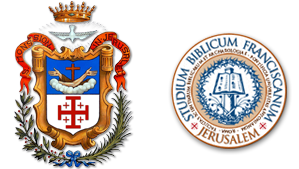...................................
[read in Italian] ![]()
Bernardino Amico immediately makes clear his intention, precising in the title of his treatise that the subject will be «the Plans and Drawings of the Sacred Edifices of the Holy Land done in Jerusalem according to the rules of the Perspective and exact measure of the size» (both in 1609 edition and in the 1620 one with few variants; see also Plans, p. 36). This means plans and elevations done onsite, applying the perspective after an accurate measurement. These statements imply that, when Amico reached the Holy Land, he already knew skills that linked him to the perspective school of the Italian Renaissance.
As far as measures are concerned, it must be said that previous other pilgrims had, more or less amateurishly, engaged in measuring the size of buildings and the distance between them. In particular, two Franciscan friars must be mentioned. In the mid-14th century, Niccolò da Poggibonsi wrote down measures in some wax tablets so that he could include them in his Libro d’Oltramare. Between the 15th and 16th centuries, Francesco Suriano wrote down measurements and liked comparing distances in his Trattato di Terra Santa, referring to spaces and places well-known to his readers (the Poor Clares, who in this way could imagine themselves in places they could have never visited).
| [click sulle immagini per ingrandirle / click on images to enlarge] |
Amico added a strong technicism to this tradition by developing some of his previous skills. This is proved not only by the beauty and the strong “geometrization” of the architectures, but also by the accuracy of the measurements, which were sometimes taken with great effort because of the location of the buildings. Moreover, Amico specifies the unit of measure adopted: in 1609 he refers to the «ancient Roman palm, divided into twelve ounces, and every ounce is five minutes, of which ten palms is a cane» (p. 5), while in 1620 he passes to «the ordinary Cane, which is in use in the Kingdom of Naples, and which is divided into twelve ounces and each ounce into five minutes» (fol. A1r and Plans, p. 43). That is 1 cane = 10 palms, 1 palm = 12 ounces, 1 ounce = 5 minutes, a measurement system really close to the one adopted in Italy at that time.
